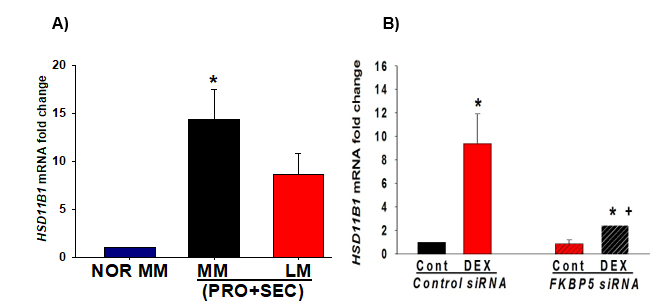Advantages:
- Novel approach for leiomyoma treatment: Direct disruption of the FKBP51-GR-HSD11B1 signaling loop
- Stronger GR suppression than single-target hormone therapies
- Targeted leiomyoma treatment: Modulates GR activity, control cortisol production and ECM generation
- Minimizes hormonal side effects, offering a fertility-friendly alternative to conventional therapies
Summary:
Uterine leiomyomas affect many women and are traditionally managed by targeting sex steroid pathways, which poses challenges for those seeking fertility preservation. Existing treatments often do not address the underlying cellular mechanisms that drive the disease, and current models of receptor regulation fail to capture the complex interplay within leiomyoma cells. In particular, emerging evidence suggests that proteins believed to inhibit receptor signaling in other tissues may instead amplify glucocorticoid receptor activity in leiomyomas, thereby enhancing the conversion of inactive cortisone to active cortisol. This process creates a self-reinforcing cycle that promotes extracellular matrix production and a myofibroblast phenotype, highlighting a gap in understanding and underscoring the need for alternative therapeutic strategies that target these non-traditional signaling pathways.
Our researcher identifies a novel molecular mechanism in uterine leiomyomas wherein elevated FKBP51 unexpectedly amplifies glucocorticoid receptor (GR) activity rather than inhibiting it, thereby upregulating HSD11B1 expression and enhancing the conversion of cortisone to active cortisol. This increase in cortisol fuels a positive feedback loop that augments GR signaling, ultimately driving extracellular matrix production and promoting a myofibroblast phenotype—a key feature of leiomyoma pathology. Technically, the invention leverages advanced RNA sequencing, FKBP5 gene silencing, dexamethasone treatments, qPCR validation, and immunohistochemistry to delineate the role of the FKBP51–GR–HSD11B1 axis, distinguishing it from existing approaches that primarily target sex steroid pathways, and thus suggesting a new therapeutic target for women seeking fertility-preserving leiomyoma treatments.

A) Increased HSD11B1 mRNA and Protein Expression in Paired Myometrium and Leiomyoma tissue vs. Normal Myometrium. B) FKBP5 augments dexamethasone-induced HSD11B1 transcription in Leiomyoma cells.
Desired Partnerships:
- License
- Sponsored Research
- Co-Development